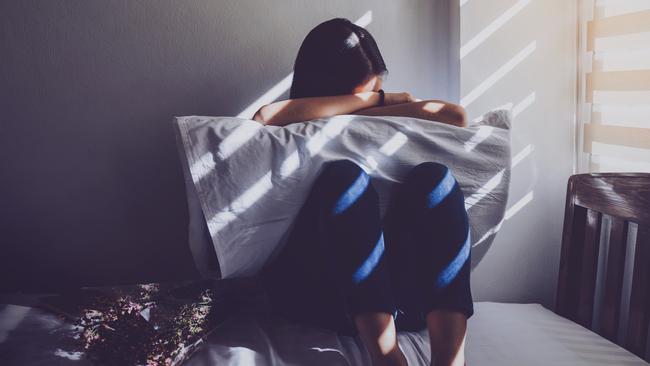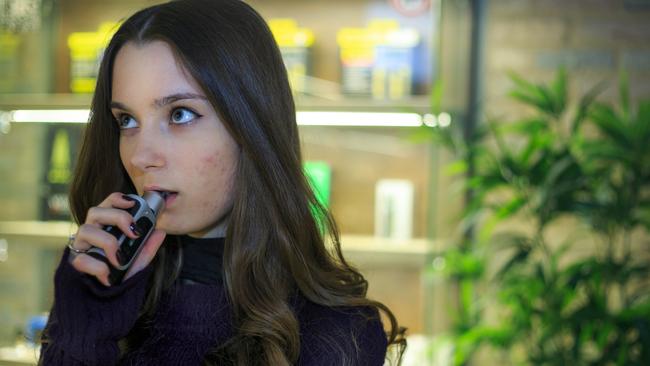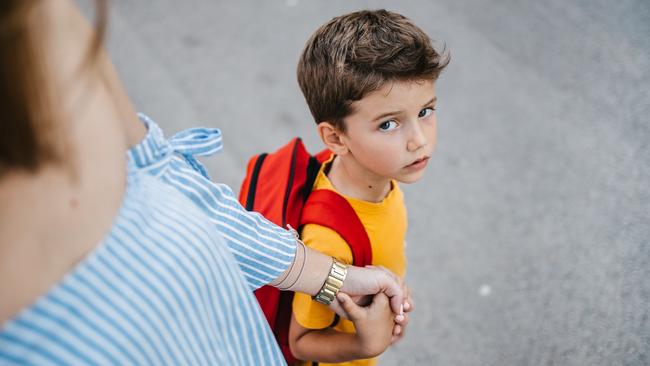Mollard: Our kids are not OK – and that’s making us all anxious
Our kids are not OK – but for those of us who didn’t grow up with ‘anxiety’ in our vernacular, its prevalence is confounding, writes Angela Mollard.
Opinion
Don't miss out on the headlines from Opinion. Followed categories will be added to My News.
They were two grandmothers, enjoying a coffee after their morning aquarobics at my local pool. They looked invigorated and, with their good posture and wide smiles, they seemed like women with a shiny attitude to life.
But as I eavesdropped on their conversation – occupational hazard – it became clear they were both concerned. They were talking about their grandchildren and were incredulous that, between them, five of these youngsters were struggling.
“They’re all suffering from anxiety,” said one. “Where’s it coming from?”
The other described how worrying it had been seeing her granddaughter’s anxiety first-hand. “I just wish I could help more,” she said. “I can’t understand why they’re so lacking in resilience.”
I suspect these conversations are occurring everywhere.

With one in five primary school children suffering from high levels of anxiety and the biggest government-funded survey of their mental health revealing anxiety levels are three times higher than that recognised by health authorities, it’s clear we don’t have something as prosaic as a “problem”.
Rather, we have an epidemic. And the big numbers keep on tumbling. Between 2021 and 2022, prescriptions for drugs to treat anxiety and depression in children and adolescents rose more than 40 per cent to 108,670. Meanwhile, 81 per cent of primary schools’ report anxiety is a significant issue, with 82 per cent saying the resource and skill levels of staff wasn’t sufficient to identify and manage anxiety.

Those grandmothers are right: Our kids are not OK.
For those of us who didn’t grow up with “anxiety” in our vernacular, its prevalence is confounding.
Plenty are likely equally concerned with the language emanating from TikTok, where words like “trauma”, “triggers” and “disassociation” are used with abandon.
For those grandmothers, “trauma” was what was experienced in the war or recalled by the likes of Frank McCourt, who chronicled the poverty and violence growing up in Ireland in his best-selling Angela’s Ashes.
Surely, it can’t be applied to a friend not inviting you to a birthday party?
The fact is we can forage around trying to understand why we have growing anxiety or we can set about fixing it, which is how I ended up in two lengthy conversations this week.

Rob Walker is the deputy president of the NSW Primary Principal’s Association, which is spearheading a groundbreaking intervention called The Anxiety Project. Walker’s also a principal of a large school, so he’s at the frontline. He knows how alarming the problem is but, just six months in, he can already see the benefits of intervening when kids are young. “This is a good news story,” he tells me, explaining how parents are being taught, alongside teachers and children, to stay calm and change the narrative on distorted thinking.
“We want confident young men and women who can make a contribution in society. Clearly anxiety is hampering our achievement of those outcomes. We can do something as a preventive mechanism like we are here, or we can leave it alone, then we’ll pay for it in the health budget or the juvenile justice budget or the welfare budget.”

The problem – as I see it – is that while the research evaluating the efficacy of the project is being funded by the Education Department, individual schools must find up to $35K in their budgets to actually run it. Yet the slow national response to vaping and mobile phone use has shown us we have to be front-footed. Surely this is what the federal Government’s recent commitment to “wellbeing” initiatives in schools should be covering?
While Walker says there’s no value in blaming anyone for our widespread anxiety, experts are clear that “helicopter” parents have raised a generation lacking in resilience and coping skills. In constantly solving their problems and reassuring them, we’ve effectively made them more fragile and sabotaged their ability to self-right and think accurately and proportionally about issues. We’ve also accommodated their anxiety, revealed in poor school attendance.

Anxiety expert Dr Eli Lebowitz tells the story of meeting one family where the child was afraid of bugs, even on the floor at home, and how the parents had responded by pushing their child around in a wheelchair. Yet, as he says, parents are effectively a mirror that children look in to frame their understanding of themselves. “If what you see reflected back to you is a child who is weak, who’s helpless, who’s vulnerable and can’t deal with things, then that’s what you start to believe about yourself.”
My other conversation was with psychologist Michael Hawton, who is central to the school project. He’s working with a nominated “coach” in each of the 54 participating schools but what he says should make parents take notice. Instead of reassuring, placating and distracting, he says we have to support kids to wrestle with their problems. It’s in the discomfort, the internal tussle, the self-talk, that they will realise control is in their hands, not external forces.
My advice: Think about the time you spent reading pregnancy books before you had kids. You owe them that same time reading books like Hawton’s The Anxiety Coach to continue the job.
ANGELA LOVES
TV
Down With Love (Netflix) is NZ-made show about young people with Down syndrome trying to find love. We could all learn something from their directness.
Book
If your kids are struggling to think of a Father’s Day gift, Rugby League Icons is a comprehensive tribute to the legendary players and clubs that have made their mark on the game.
Helen Mirren
I drew breathe when I saw the images of Dame Helen in Dujour magazine. Finally, a woman allowed to look her age. Sun-damage, wrinkles and a life boldly lived are all there to see. Magnificent.
angelamollard@gmail.com
twitter.com/angelamollard




